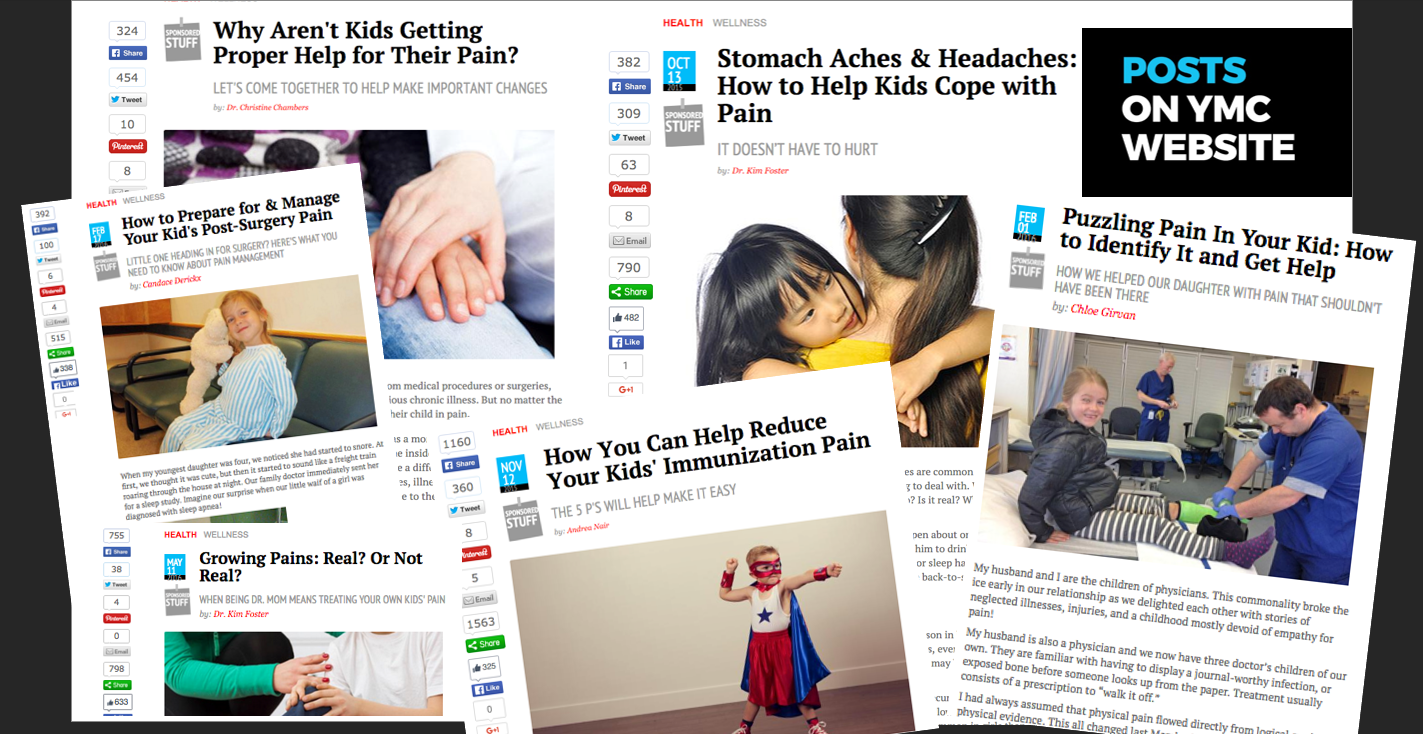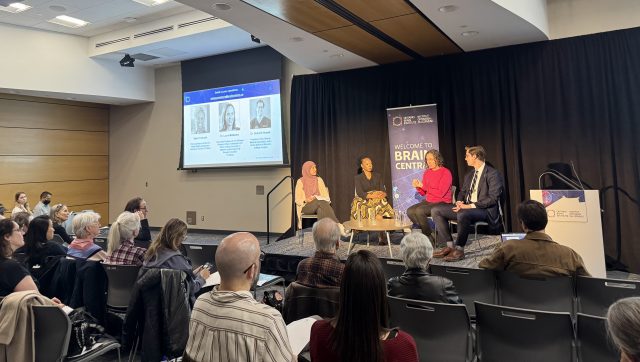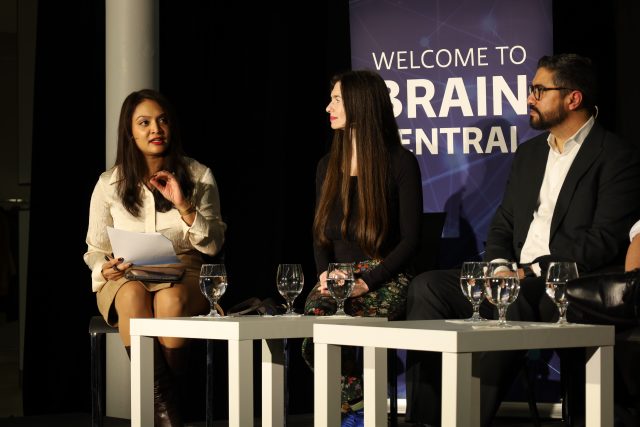“We don’t have to let kids suffer in silence” said Ontario Brain Institute’s President & Scientific Director, Tom Mikkelsen, as he opened one of OBI’s Public Talks, “Pain in Children: What we don’t know can hurt them”.
The event featured four speakers, each with a unique expertise when it comes to pain experienced by children, primarily children with disabilities.
- Christine Chambers, Canada Research Chair in Children’s Pain and Killam Professor in the departments of Pediatrics and Psychology & Neuroscience at Dalhousie University and Scientific Director at Solutions for Kids in Pain
- Darcy Fehlings, Senior clinician scientist at Holland Bloorview Kids Rehabilitation Hospital, Principal Investigator at CP-NET (OBI’s cerebral palsy research program) and Network Member at Solutions for Kids in Pain
- Julian Cappelli along with this mother Donna Cappelli. Julian a 19-year-old young man who was born with a severe form of cerebral palsy. One of his struggles is constant pain, especially when he has growth spurts.
Pain in children is misunderstood, under-diagnosed, and under-treated. This is even a bigger issue in children with disabilities. Our understanding of the negative impact pain can have on the developing brain has evolved, but there is a lack of change in pain management practices.
The OBI Public Talk focused on raising awareness and generating dialogue, the first-hand experience of navigating chronic pain throughout childhood, and how the research community is working to better translate their findings into tangible tools that families can employ to treat, and if possible, get ahead of pain.
And so, here are three key takeaways in managing pain in children:
- Pain and the Family Unit

Bringing these science and research insights directly to those experiencing the pain, the family and the caregivers that support them is welcoming news to both Julian and Donna Cappelli. Julian, at age 19, has lived with cerebral palsy and accompanying pain his entire life. It’s an experience that has not only had an obvious impact on Julian, but has had a direct bearing on his family as well. “One of the things that people don’t realize is that while they are suffering, we are suffering,” explains Donna. “When Julian suffers, I suffer. I think it’s important that the clinicians realize that and they have resources for the parents.”
During their video contribution to the Public Talk, Julian and Donna shared specific tools that had helped Julian manage the pain he experiences – particularly during growth spurts. One of these tools is mindful meditation, which originally helped Julian to ease back into sleep when he woke with pain, but is now a go-to for him throughout the day. What he likes best about this method is that it is something that he can do on his own, independently. “I feel in control,” Julian shares.
- Pain and Quality of Life
The pain experienced by children with disabilities is often misunderstood, or not discussed at all. Dr. Darcy Fehlings explains that in many cases the pain associated with disabilities such as cerebral palsy can almost be accepted as “expected” by children, who don’t know the difference of what it feels like to be absent of pain.
In her remarks, Dr. Fehlings noted that children with cerebral palsy are less likely to participate in activities and have a lower quality of life while the presence of chronic pain in cerebral palsy being the most important factor. The pain, Dr. Fehlings explains, becomes what the child naturally focuses on. As a result, the children develop an emotional response. They often feel down, sad and anxious. These feelings, as noted by the Cappelli family, are often experienced by the entire family unit.
In the Public Talk Dr. Fehlings shared information on “Care Pathways”, models that help guide physicians in evidence informed care. One of these pathways is the “ADOPT Framework” that is guided by the following principles:
Assessment
Demystification
Optimize
Promote
Treat
- #ItDoesntHavetoHurt
Those who are actively engaged on social media may recognize the hashtag #Itdoesnthavetohurt. The hashtag, and the accompanying awareness campaign, was the result of a collaborative effort between Dr. Chambers and Erica Ehm, creator and founder of The Yummy Mummy Club. Dr. Chambers recognized that there was a real barrier in getting research in front of the right audience; in this case, relying evidence-based information about pain experienced by children directly to parents. Communication wasn’t necessarily a strength found in scientists’ proverbial toolboxes, but it certainly was a skill-set employed by social media influencers.
“We know from research and science that poorly managed pain has a long-term impact on childrens’ brains and childrens’ bodies,” says Dr. Chambers. “Managing pain in children is not just a ‘nice thing to do’.”
By way of this partnership, parents and caregivers were better informed on pain management strategies and tools.
To learn more about the OBI Public Talk on Pain in Children, watch full video here.




